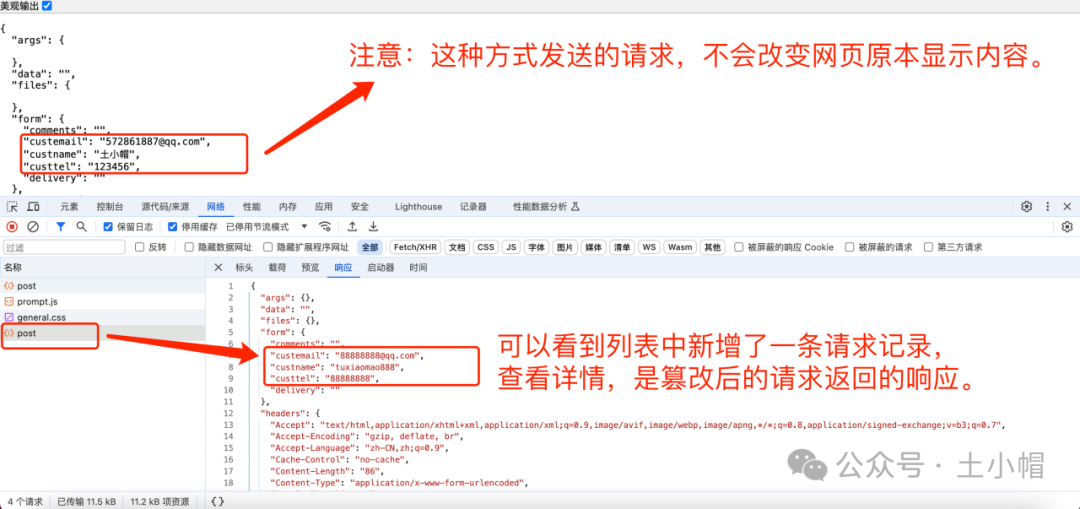本文主要是介绍Dite-HRNet: Dynamic Lightweight High-Resolution Network for Human PoseEstimation,希望对大家解决编程问题提供一定的参考价值,需要的开发者们随着小编来一起学习吧!
阅读此篇文章的感触:
首先针对ACM提出两种类型:DCM和GCM
1. 首先介绍ACM的组成:
① 提出------adaptive context pooling, 包括一个1*1操作和softmax,以及transpose操作
②context shifting, 就是将context pooling特征图谱经过两个 1 × 1 convolutions with non-linear activation(1*1+BN+ReLu+1*1+BN+ReLu)和sigmoid函数
③ 将求得的shift通道权重与输入特征图谱进行像素相乘。
以上就是ACM的答题过程,针对DCM和GCM两种模块ACM的第一个步骤是不一样的。
2.DCM 的介绍
首先它是针对不同分支的不同分辨率进行聚合的,因此在ACM的第一步adaptive context pooling会有所不同。DCM的操作过程是将所有输入尺寸除以最小分辨率的尺寸,即,然后在合并(concat)
具体代码如下
class DenseContextModeling(nn.Module):def __init__(self, channels, reduction):super().__init__()num_branches = len(channels)self.reduction = reduction[num_branches-2]self.channels = channelstotal_channel = sum(channels)mid_channels = total_channel // self.reduction##这个是ACM中的adaptive context pooling, a context mask,一个1*1卷积和softmax部分 self.conv_mask = nn.ModuleList([nn.Conv2d(channels[i], 1, kernel_size=1, stride=1, padding=0, bias=True)for i in range(len(channels))])self.softmax = nn.Softmax(dim=2)##这个是shift操作——2个1*1卷积和一个sigmoid函数self.channel_attention = nn.Sequential(nn.Conv2d(total_channel, mid_channels, kernel_size=1, stride=1, padding=0, bias=False),nn.BatchNorm2d(mid_channels),nn.ReLU(inplace=True),nn.Conv2d(mid_channels, total_channel, kernel_size=1, stride=1, padding=0, bias=True),nn.Sigmoid())##这个就是真正的ACM实现def global_spatial_pool(self, x, mini_size, i):batch, channel, height, width = x.size()mini_height, mini_width = mini_size# [N, C, H, W]x_m = x# [N, C, H * W]x_m = x_m.view(batch, channel, height * width)# [N, MH * MW, C, (H * W) / (MH * MW)]x_m = x_m.view(batch, mini_height * mini_width, channel, (height * width) // (mini_height * mini_width))# [N, 1, H, W]mask = self.conv_mask[i](x)# [N, 1, H * W]mask = mask.view(batch, 1, height * width)# [N, 1, H * W]mask = self.softmax(mask)# [N, MH * MW, (H * W) / (MH * MW)]mask = mask.view(batch, mini_height * mini_width, (height * width) // (mini_height * mini_width))# [N, MH * MW, (H * W) / (MH * MW), 1]mask = mask.unsqueeze(-1)# [N, MH * MW, C, 1]x = torch.matmul(x_m, mask)# [N, C, MH * MW, 1]x = x.permute(0, 2, 1, 3)# [N, C, MH, MW]x = x.view(batch, channel, mini_height, mini_width)return xdef forward(self, x):mini_size = x[-1].size()[-2:]out = [self.global_spatial_pool(s, mini_size, i) for s, i in zip(x[:-1], range(len(x)))] + [x[-1]]out = torch.cat(out, dim=1)out = self.channel_attention(out)out = torch.split(out, self.channels, dim=1)out = [s * F.interpolate(a, size=s.size()[-2:], mode='nearest') for s, a in zip(x, out)]return out
2.GCM
代码
class GlobalContextModeling(nn.Module):def __init__(self, channels, num_branch, reduction, with_cp=False):super().__init__()self.with_cp = with_cpself.reduction = reduction[num_branch]mid_channels = channels // self.reductionself.conv_mask = nn.Conv2d(channels, 1, kernel_size=1, stride=1, padding=0, bias=True)self.softmax = nn.Softmax(dim=2)self.channel_attention = nn.Sequential(nn.Conv2d(channels, mid_channels, kernel_size=1, stride=1, padding=0, bias=False),nn.BatchNorm2d(mid_channels),nn.ReLU(inplace=True),nn.Conv2d(mid_channels, channels, kernel_size=1, stride=1, padding=0, bias=True),nn.Sigmoid())self.bn = nn.BatchNorm2d(channels)def global_spatial_pool(self, x):batch, channel, height, width = x.size()# [N, C, H, W]x_m = x# [N, C, H * W]x_m = x_m.view(batch, channel, height * width)# [N, 1, C, H * W]x_m = x_m.unsqueeze(1)# [N, 1, H, W]mask = self.conv_mask(x)# [N, 1, H * W]mask = mask.view(batch, 1, height * width)# [N, 1, H * W]mask = self.softmax(mask)# [N, 1, H * W, 1]mask = mask.unsqueeze(-1)# [N, 1, C, 1]x = torch.matmul(x_m, mask)# [N, C, 1, 1]x = x.permute(0, 2, 1, 3)return xdef forward(self, x):def _inner_forward(x):identity = xx = self.global_spatial_pool(x)x = self.channel_attention(x)x = self.bn(identity * x)return xif self.with_cp and x.requires_grad:x = cp.checkpoint(_inner_forward, x)else:x = _inner_forward(x)return x
DSC代码
class DynamicSplitConvolution(nn.Module):def __init__(self, channels, stride, num_branch, num_groups, num_kernels, with_cp=False):super().__init__()self.with_cp = with_cpself.num_groups = num_groups[num_branch]self.num_kernels = num_kernels[num_branch]self.split_channels = _split_channels(channels, self.num_groups)self.conv = nn.ModuleList([ConvBN(self.split_channels[i],self.split_channels[i],kernel_size=i * 2 + 3,stride=stride,padding=i + 1,groups=self.split_channels[i],num_kernels=self.num_kernels)for i in range(self.num_groups)])def forward(self, x):def _inner_forward(x):if self.num_groups == 1:x = self.conv[0](x)else:x_split = torch.split(x, self.split_channels, dim=1)x = [conv(t) for conv, t in zip(self.conv, x_split)]x = torch.cat(x, dim=1)x = channel_shuffle(x, self.num_groups)return xif self.with_cp and x.requires_grad:x = cp.checkpoint(_inner_forward, x)else:x = _inner_forward(x)return x
在这里所有的卷积和采用的是动态卷积生成卷积核
动态卷积采用的是每一个输入特征图谱都有K个不同的卷积核(卷积核的大小一样,不一样的是参数值),如何生成K个不同的卷积核,采用pytorch里面的F.conv2函数自己定义。首先是生成batchsize个K个卷积核,采用的是SENet函数。然后是对F.conv2函数进行研究发现维度和现有想法不一致,如何实现每一个输入尺寸特征图谱有K个不同卷积核参数,现将输入维度变成batchsize*inplane,然后group=batchsize,这样,每一个分支代表一个特征图谱上的输入channel个数,且每一个特征图谱具有K个不同卷积核参数。
class KernelAttention(nn.Module):def __init__(self, channels, reduction=4, num_kernels=4, init_weight=True):super().__init__()if channels != 3:mid_channels = channels // reductionelse:mid_channels = num_kernelsself.avg_pool = nn.AdaptiveAvgPool2d(1)self.conv1 = nn.Conv2d(channels, mid_channels, kernel_size=1, bias=False)self.bn = nn.BatchNorm2d(mid_channels)self.relu = nn.ReLU(inplace=True)self.conv2 = nn.Conv2d(mid_channels, num_kernels, kernel_size=1, bias=True)self.sigmoid = nn.Sigmoid()if init_weight:self._initialize_weights()def _initialize_weights(self):for m in self.modules():if isinstance(m, nn.Conv2d):nn.init.kaiming_normal_(m.weight, mode='fan_out', nonlinearity='relu')if m.bias is not None:nn.init.constant_(m.bias, 0)if isinstance(m, nn.BatchNorm2d):nn.init.constant_(m.weight, 1)nn.init.constant_(m.bias, 0)def forward(self, x):x = self.avg_pool(x)x = self.conv1(x)x = self.bn(x)x = self.relu(x)x = self.conv2(x).view(x.shape[0], -1)x = self.sigmoid(x)return xclass KernelAggregation(nn.Module):def __init__(self, in_channels, out_channels, kernel_size, stride, padding, dilation, groups, bias, num_kernels,init_weight=True):super().__init__()self.in_channels = in_channelsself.out_channels = out_channelsself.kernel_size = kernel_sizeself.stride = strideself.padding = paddingself.dilation = dilationself.groups = groupsself.bias = biasself.num_kernels = num_kernelsself.weight = nn.Parameter(torch.randn(num_kernels, out_channels, in_channels // groups, kernel_size, kernel_size),requires_grad=True)if bias:self.bias = nn.Parameter(torch.zeros(num_kernels, out_channels))else:self.bias = Noneif init_weight:self._initialize_weights()def _initialize_weights(self):for i in range(self.num_kernels):nn.init.kaiming_uniform_(self.weight[i])def forward(self, x, attention):batch_size, in_channels, height, width = x.size()x = x.contiguous().view(1, batch_size * self.in_channels, height, width)weight = self.weight.contiguous().view(self.num_kernels, -1)weight = torch.mm(attention, weight).contiguous().view(batch_size * self.out_channels,self.in_channels // self.groups,self.kernel_size,self.kernel_size)if self.bias is not None:bias = torch.mm(attention, self.bias).contiguous().view(-1)x = F.conv2d(x,weight=weight,bias=bias,stride=self.stride,padding=self.padding,dilation=self.dilation,groups=self.groups * batch_size)else:x = F.conv2d(x,weight=weight,bias=None,stride=self.stride,padding=self.padding,dilation=self.dilation,groups=self.groups * batch_size)x = x.contiguous().view(batch_size, self.out_channels, x.shape[-2], x.shape[-1])return xclass DynamicKernelAggregation(nn.Module):def __init__(self, in_channels, out_channels, kernel_size, stride=1, padding=0, dilation=1, groups=1, bias=True,num_kernels=4):super().__init__()assert in_channels % groups == 0self.attention = KernelAttention(in_channels,num_kernels=num_kernels)self.aggregation = KernelAggregation(in_channels,out_channels,kernel_size=kernel_size,stride=stride,padding=padding,dilation=dilation,groups=groups,bias=bias,num_kernels=num_kernels)def forward(self, x):attention = xattention = self.attention(attention)x = self.aggregation(x, attention)return x
Enable GingerCannot connect to Ginger Check your internet connection
or reload the browserDisable in this text fieldRephraseRephrase current sentence7Log in to edit with Ginger×
这篇关于Dite-HRNet: Dynamic Lightweight High-Resolution Network for Human PoseEstimation的文章就介绍到这儿,希望我们推荐的文章对编程师们有所帮助!






